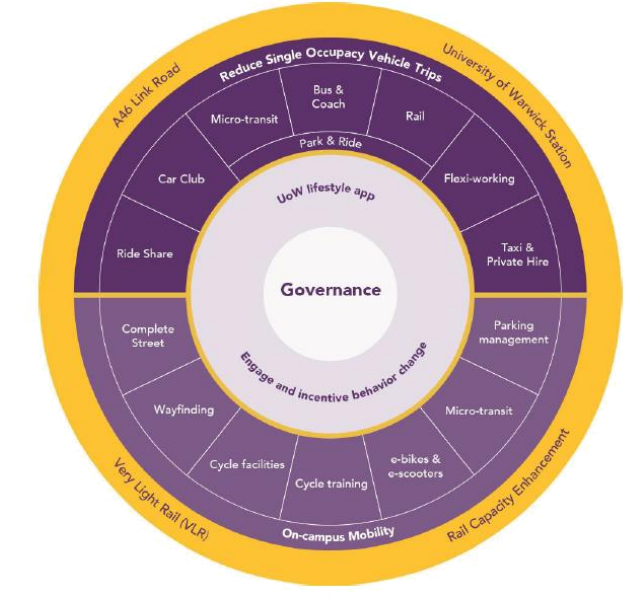The University of Warwick commissioned Steer to provide a fresh approach to the development of a long-term masterplan. As part of the masterplan we have used our experience of planning and integrating innovative transport technologies to enable sustainable growth based on understanding of key user groups: staff, students, academic and conference visitors.
How we helped
Considering different transport technologies and use cases, our work incorporated:
- Assessing alternatives for improving efficiencies and user experience for evolving the on-campus shuttle minibus services. We recommended a demand responsive service linking to key origin hubs outside the campus and railway stations;
- Engaging with Warwick Manufacturing Group (WMG), we considered the potential future role for CAV (Connected and Automated Vehicle) trials as part of the Innovate UK funded CAV testbed;
- Reviewing and recommending a re-imagining the existing bike share scheme to include e-bikes, dockless operation and e-scooters (on-campus initially as current regulation allows);
- Recommending on-site freight micro-consolidation using EVs and e-cargo bikes;
- Assessing the potential for a car-share service to take advantage of new developments and evolving car access to the campus, through edge of site park and ride; and
- Concept development of a MaaS app with functions such as a Campus Concierge.
To help the client better understand the potential of technology-led solutions our work included exploration of the market, a good practice review and site visits with the client to experience existing on-demand services in operation in Oxford. We also worked closely with planning consultants on the overarching campus masterplan.
Successes and outcomes
 Our mobility masterplan incorporated innovative transport technologies and services to help address key problems/challenges identified, including a need to:
Our mobility masterplan incorporated innovative transport technologies and services to help address key problems/challenges identified, including a need to:
- Reduce Single Occupancy Vehicle trips;
- Support more efficient, legible and comfortable movement to, from and on-campus; and
- Engage and incentivise behaviour change to support mode and culture shifts.
A key output of the mobility masterplan was a detailed Action Plan for each of the mobility elements with short (year 1 and 2), medium (year 3-6) and long term (year 7-12) actions.
 Our mobility masterplan incorporated innovative transport technologies and services to help address key problems/challenges identified, including a need to:
Our mobility masterplan incorporated innovative transport technologies and services to help address key problems/challenges identified, including a need to: